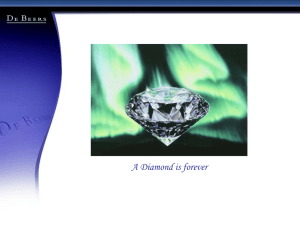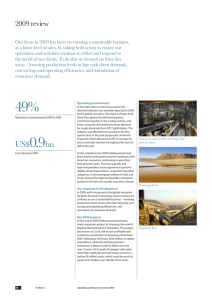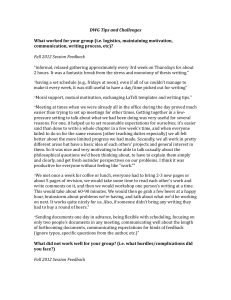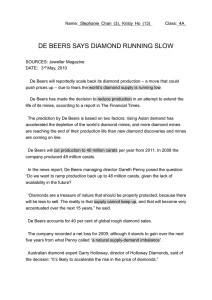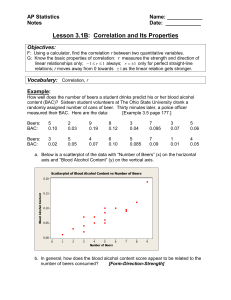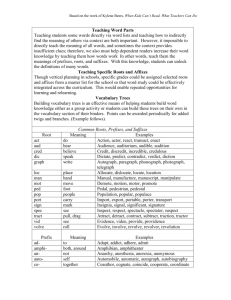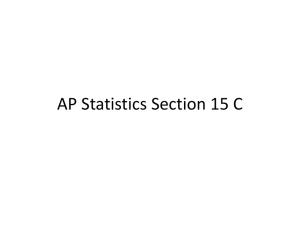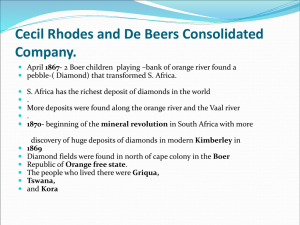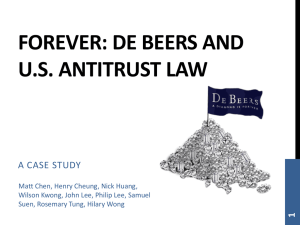Think about… - Martin Prosperity Institute
advertisement
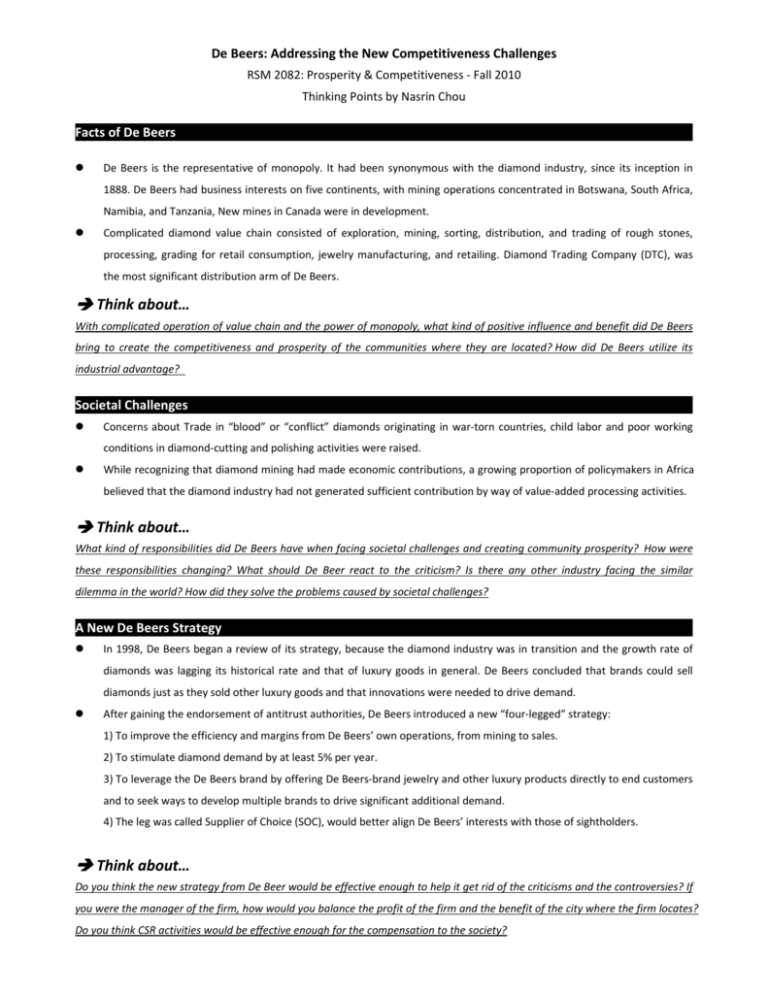
De Beers: Addressing the New Competitiveness Challenges RSM 2082: Prosperity & Competitiveness ‐ Fall 2010 Thinking Points by Nasrin Chou Facts of De Beers De Beers is the representative of monopoly. It had been synonymous with the diamond industry, since its inception in 1888. De Beers had business interests on five continents, with mining operations concentrated in Botswana, South Africa, Namibia, and Tanzania, New mines in Canada were in development. Complicated diamond value chain consisted of exploration, mining, sorting, distribution, and trading of rough stones, processing, grading for retail consumption, jewelry manufacturing, and retailing. Diamond Trading Company (DTC), was the most significant distribution arm of De Beers. Think about… With complicated operation of value chain and the power of monopoly, what kind of positive influence and benefit did De Beers bring to create the competitiveness and prosperity of the communities where they are located? How did De Beers utilize its industrial advantage? Societal Challenges Concerns about Trade in “blood” or “conflict” diamonds originating in war‐torn countries, child labor and poor working conditions in diamond‐cutting and polishing activities were raised. While recognizing that diamond mining had made economic contributions, a growing proportion of policymakers in Africa believed that the diamond industry had not generated sufficient contribution by way of value‐added processing activities. Think about… What kind of responsibilities did De Beers have when facing societal challenges and creating community prosperity? How were these responsibilities changing? What should De Beer react to the criticism? Is there any other industry facing the similar dilemma in the world? How did they solve the problems caused by societal challenges? A New De Beers Strategy In 1998, De Beers began a review of its strategy, because the diamond industry was in transition and the growth rate of diamonds was lagging its historical rate and that of luxury goods in general. De Beers concluded that brands could sell diamonds just as they sold other luxury goods and that innovations were needed to drive demand. After gaining the endorsement of antitrust authorities, De Beers introduced a new “four‐legged” strategy: 1) To improve the efficiency and margins from De Beers’ own operations, from mining to sales. 2) To stimulate diamond demand by at least 5% per year. 3) To leverage the De Beers brand by offering De Beers‐brand jewelry and other luxury products directly to end customers and to seek ways to develop multiple brands to drive significant additional demand. 4) The leg was called Supplier of Choice (SOC), would better align De Beers’ interests with those of sightholders. Think about… Do you think the new strategy from De Beer would be effective enough to help it get rid of the criticisms and the controversies? If you were the manager of the firm, how would you balance the profit of the firm and the benefit of the city where the firm locates? Do you think CSR activities would be effective enough for the compensation to the society?
